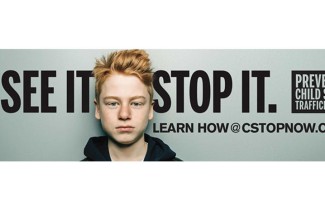UK study focuses on child sex trafficking prevention in Kentucky middle schools

A team of researchers at the University of Kentucky continues to advance strategies to prevent child sex trafficking (CST) across the Commonwealth through a training program for middle school staff.
Strong risk factors for CST include a dysfunctional family environment characterized by violence and parental substance use. In Kentucky, familial sex trafficking is the more common form of CST. Children at higher risk of being sex trafficked are middle schoolers between ages 11 to 14.
In 2021, Kentucky had the nation’s highest child abuse and neglect rate for the third consecutive year, according to statistics from the U.S. Department of Health & Human Services. The Commonwealth is also fourth nationwide for overdose deaths.
Leading the efforts to address this pressing issue are Ann Coker, Ph.D., director of the UK Center for Research on Violence Against Women, and Ginny Sprang, Ph.D., director of the UK Center on Trauma and Children. Both are the principal investigators in the study funded by the Centers for Disease Control and Prevention (CDC).
They have created “CSTOP Now!,” which encourages people to notice the signs of CST and take steps to stop it. In other words, “See It (CST) to Stop It.” The first phase of the research project included a billboard campaign across Kentucky to raise awareness about child sex trafficking. More than two dozen Kentucky counties were randomly selected to receive billboards focused on preventing CST.
For the second phase of the project, Coker and Sprang developed an intervention to use in roughly 50 middle schools across the state as part of a randomized controlled trial. The intervention includes a detailed screening for middle school staff to be able to identify and respond to children who are involved in sex trafficking or are at high risk.
“Part of what we're doing is we're showing staff how to screen, and then based on those screening results, how to respond in a way that is informed by bystander theory, which supports the activation of people who see things on the sidelines, but they don't get involved because they don't know what to do or how to do it. We're trying to give them some real strategies,” said Sprang.
Identifying sex trafficking cases can be difficult because students and parents don’t talk about the problem. Researchers said, in their experience, cases are often labeled as another type of incident.
The intervention they’ve developed includes a series of modules through a learning management system. The modules explain what child sex trafficking is and is not, dispelling myths and learning about the bystander theory. The lessons also focus on risk factors, the definition of consent and coercion, and understanding biases.
“We do not want staff to do investigations. That's not safe for them. We want staff to stay in their role and not be a therapist, an assessor or an investigator,” said Sprang. “Our hope is they use this screening tool, know what to do with the results and how to intervene.”
The training also offers video roleplays to learn from and audio clips of interchanges between middle school staff, students and parents.
“Middle school staff, whether they know it or not, are ideally suited to be interventionists or preventionists. Our goal is to help prevent potential trauma through this work,” said Coker. “This training allows people to find out what their voice is in this problem and how they can help. Ultimately our goal is to see a reduction in familial child sex trafficking. We may not see that in the two years of this study, but this is a huge first step toward preventing this type of suffering.”
Anyone affiliated with middle schools interested in learning more about the study can send questions to cstopnow@uky.edu.
You can learn more about the CSTOP Now! campaign online at CSTOPNOW.com.
This project is supported by the Centers for Disease Control and Prevention (CDC) of the U.S. Department of Health and Human Services (HHS) as part of an award totaling $800,000 with 0% financed with non-governmental sources. The contents are those of the author(s) and do not necessarily represent the official views of, nor an endorsement, by CDC, HHS, or the U.S. Government. For more information, please visit CDC.gov.


